How Do You Know What Gear You Are in
Understanding the fundamentals of how bicycle gears work, and what effect varying the size of the front chainrings and rear cassette sprockets volition have on your pedalling will help you choose the most suitable gearing for your ability.
It'south difficult to know whether yous need a archetype, compact, a mid-compact chainset (or even smaller), and so you might want a 10-speed, 11-speed, or even now a 12-speed groupset to get with information technology.
Here we'll help you become more gear-savvy efficient cyclists — we promise.
>>> Road bike groupsets: Shimano, SRAM and Campagnolo heirachies explained
Bike gears: the basics
What determines the number of bike gears you have?
It's a elementary multiplication of the number of sprockets at the rear with the number of chainrings at the front. A triple chainring set-upward with a 10-speed rear cassette is therefore a xxx-speed bicycle — in other words, information technology's possible to employ all of the x sprockets in combination with each of the three chainrings. Likewise a double chainring paired with an 11-speed cassette is a 22-speed set-upwards, and so on.
Why practise you need gears on a route bicycle?
Why have gears at all? Well, in a nutshell, gears are at that place to enable u.s. to maintain a comfortable pedalling speed (or cadence) regardless of the slope or terrain — something that no one single gear is capable of.
A loftier gear, sometimes referred to by cyclists equally a 'big gear', is optimal when descending or riding at high speeds. The highest, or biggest gear on a bicycle is achieved by combining the largest front chainring size with the smallest rear cog or sprocket — expressed every bit '53x11', for case.
Vice versa, combining the smallest front chainring size with the largest rear sprocket size results in the lowest available gear, which will help you keep the pedals spinning when the road points steeply upwards.
Allow's exist clear most 1 thing — having lots of gears is non about making the bike faster. A bike with 30 or more gears is not an indication of a automobile designed to break the country speed record any more than a bike with but a single gear, assuming similar ratios.
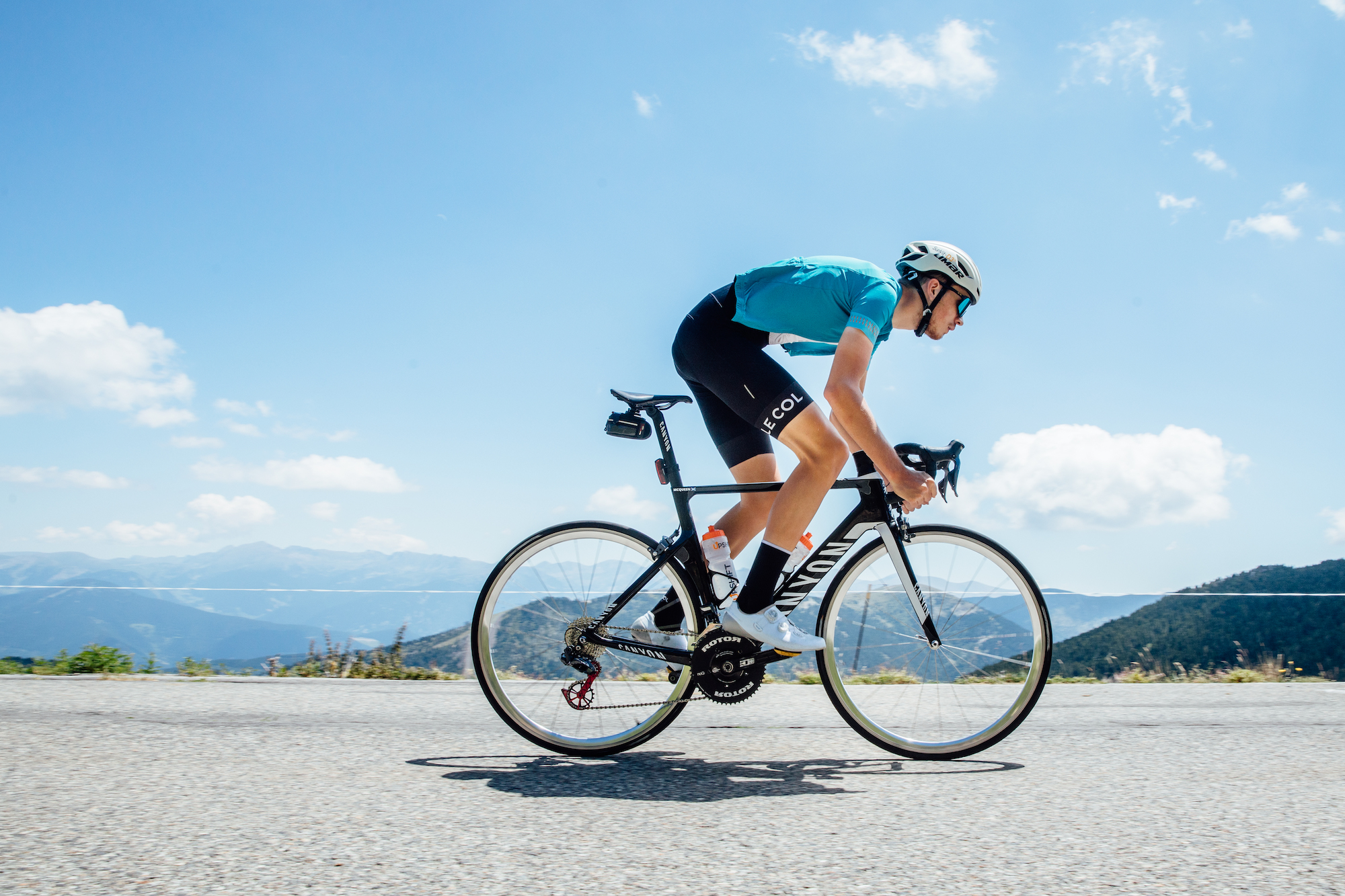
(Paradigm credit: Future)
It'southward nearly efficiency and having a much broader range, or pick, of gears for a given situation. Just like a auto, bicycles do good from a low gear to accelerate from a standstill, or to climb a steep hill, and at the other end of the scale a high gear helps you lot to accomplish loftier speeds without over-revving.
Continuing with the auto example, using too low a gear at high speed would upshot in high fuel consumption. The same is true of your body pedalling a cycle. So, quite but, more gears ways more scope to find your preferred pedalling speed.
To put this into perspective, in the days of five or six-speed cassettes, a range of 12-25 teeth could only exist accomplished by having sizeable gaps between sprocket sizes. Modern 11-speed cassettes with the same spread, 12-25, would have just unmarried molar increments for the majority of the shifting.
The result is smoother, more precise shifting, as the mechanical difficulties the chain has to overcome to climb onto the bigger sprocket or drop down onto a smaller one are much reduced with smaller increments, simply most importantly, the possibility is there to greatly better pedalling efficiency. Cyclists are much more able to fine-tune their pedalling speed to suit the gradient or terrain, oftentimes resulting in a lower free energy cost.
Why do some people opt for a single speed cycle?
You don't accept to ride a bike with gears - some people choose to ride singlespeed bikes. These still have a gear - which is determined by the size of the front chainring and rear cog.
Singlespeed bikes are popular among commuters living in flat areas, because they require fiddling maintenance. They're too used by some racers (hill climbers for example) who want to drop weight and cut down on any extra complication coming from the shifting process - in this case, choosing the right gear ratio is crucial. Finally, track bikes only ever have one gear - though again riders will change their ready to suit certain events.
Win some, lose some
The reality, on a multi-geared set-up, particularly when there are as many as 33 on offer, is that 'overlapping' gears are unavoidable. In other words, some gear combinations will result in the same ratio every bit others using a different sprocket and chainring. For instance, 53x19 is the aforementioned gear as 39x14.
Too, certain 'crossover' gears, at the extremes of the range, may not be recommended for utilize, due to the boosted strain that is placed upon the chain. Old-fashioned advice, which is yet relevant, is to avert 'crossing the chain'. See the diagram below for an analogy of this.
Then yous're not e'er getting 33 gears at your disposal, simply it's non some kind of marketing trick by manufacturers, to slyly crook you lot out of gears, it's merely the nature of the beast.
As we've already said, the total number is not the selling point, instead it'south the ability to have such a continual progression of closely spaced gears.
In that location's no need to struggle these days considering there are heaps of gearing options available and so riders of all abilities can go the well-nigh from their pedalling. The trick is to know what'southward what, so you'll be able to decide what will all-time suit your riding. Here's the lowdown to put you on the right track.
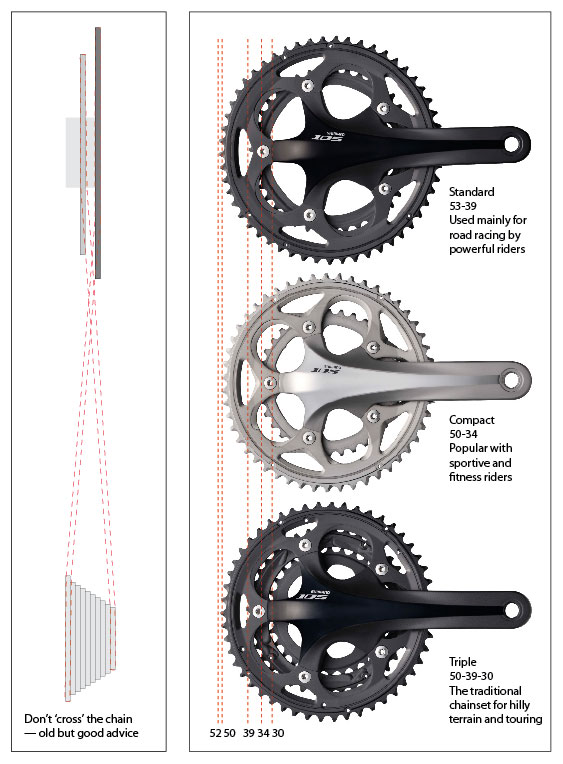
Guide to dissimilar types of gears
Standard double
Two chainrings at the front paired with upwards to 9, 10, 11, or 12 sprockets at the rear.
A classic 53-39t combination is known as a 'standard' chainset, though information technology is largely unused by recreational cyclists and very rarely specced on bikes past manufacturers.
A standard double set up-upward is unremarkably the preferred choice for racing, offering the largest chainring sizes for the biggest gears possible to continue you pedalling smoothly when speeds are loftier.
Some reduction of the lower gearing is possible, but only as low equally a 38t inner chainring, so if it'due south depression gears you're afterward, a standard double is not the best fashion to go.
Compact
A compact is essentially a double prepare-upward, only smaller. Both chainrings are reduced in size, ordinarily 34t or 36t inner, paired with a 48t or 50t outer, reducing the gear ratio beyond the range. Information technology's a highly popular choice as the reduction in gearing at the lower end is enough for most to tackle even Alpine climbs, all the same in that location is not a huge reduction of the elevation gear, yet allowing fast descending.
Semi-compact
Semi-compact chainsets surged in popularity in the last decade, and they are ordinarily the go-to front chainring combination for those bikes sold with a Shimano/Campagnolo double-ring setup.
The semi-compact chainset offers a 52t outer chainring (one tooth smaller than the standard, but two teeth bigger than the meaty) paired with a 36t inner band (iii teeth smaller than the standard and 2 bigger than the compact).
This combination offers the best of both worlds; the 36 inner ring can be paired with an xi-28, xi-30 or xi-32 cassette at the rear to offer enough gears to tackle most every climb, while a 52t at the front offers a bigger gear for fast grouping riding, descending, and even racing.
Triple
Having three chainrings brings the possibility of adding a much smaller gear option. The third chainring is usually 30t or smaller, which when paired with a large ratio rear cassette, can provide an extremely low gear for use on steep climbs. A triple is the preferred option for riders looking for a 'bail-out' option, ofttimes those regularly riding in very hilly regions.
It'southward also beneficial for laden touring when luggage makes the battle against gravity fifty-fifty tougher.
SRAM AXS
In 2019, SRAM launched its AXS groupset. Bachelor on a SRAM Red eTap or Forcefulness build, the groupset offers smaller chainrings - available options are 50/37T, 48/35T, and 46/33T. On the back, the 12-speed cassette starts at a 10-tooth cog, and increases by one-tooth per cog. The overall result is that you can reach a higher resistance at the superlative-end, and your smallest gear is even easier to push.
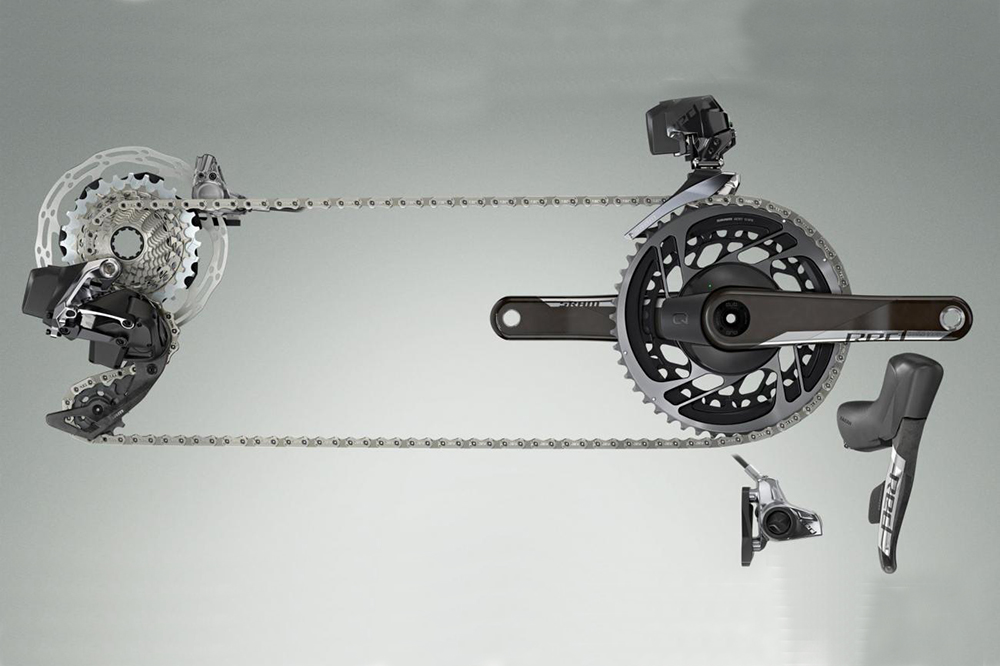
The new SRAM Red eTap AXS with its innovative gearing ratios
SRAM Apex
Apex was the first of a new wave of 'super-compact' gearing. SRAM has based Apex gearing effectually a compact double chainset, but utilises a specially designed rear derailleur and big ratio cassette of upward to 11-36t to significantly reduce the gearing.
This non merely offers an extra depression lesser gear, lower even than a triple, but besides provides an equivalent or larger top gear than a triple too. In this manner, the Apex set-upwards aims to practically negate the need for a triple — a broader range of gears, that's lighter and amend looking.
Hub gears
This type of robust, low-maintenance planetary gear organization, housed in a fatty rear hub, is still going strong. The pop Rohloff hub has 14 gears, while four, seven, eight, nine and 12-speed options are bachelor from the likes of SRAM, Shimano and Sturmey-Archer.
The choice of individual gears may be less than using a derailleur system, but information technology's still possible to personalise ratios by playing around with chainring and rear sprocket sizes. Hub gears are generally tough and require very fiddling maintenance so they're smashing for everyday commuter bikes, especially every bit most permit you to change gear without pedalling besides — handy at traffic lights. Their weight is their Achilles heel, counting confronting them in hillier terrain and on longer rides.
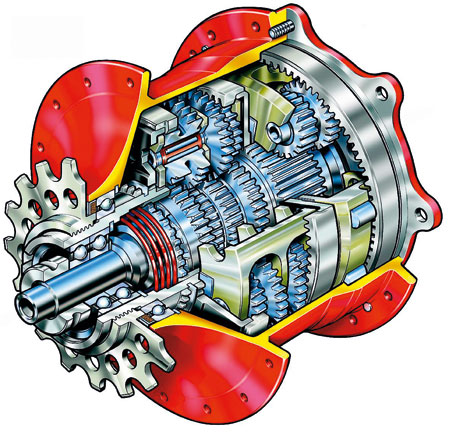
PMP 33t chainring
As a simple fix to reduce a compact gear ratio a tad farther. PMP's 33t ring just replaces the standard consequence 34t, and Bob'due south your uncle… the bottom gear just got lower.
Cassette ratios
What does 11-25 or 12-28 refer to? The showtime number is the smallest sprocket size, frequently 11t or 12t (and now 10t) and the second number is the largest sprocket size, commonly anything from 25t to 32t and sometimes larger.
How to route bike gear shifters piece of work?
With some modern designs, it'south non e'er immediately obvious where the shift levers are. If you're in any dubiousness, a local bike shop will run through this with you lot, but hither's the basics for the majority of the mechanical gearsets that are on the market. Regardless of brand, right-manus levers control the rear derailleur, and left hand levers the front.
Electronic gears often work differently, and some similar SRAM AXS can fifty-fifty be customised to the rider'southward preference.
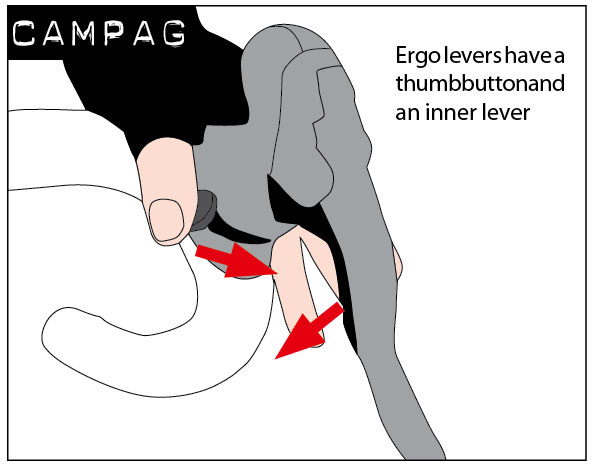
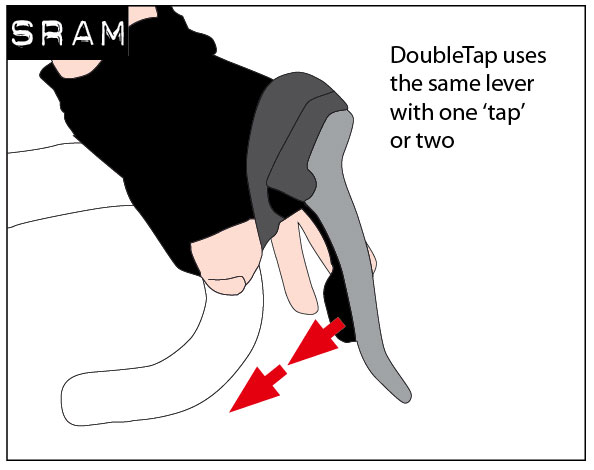
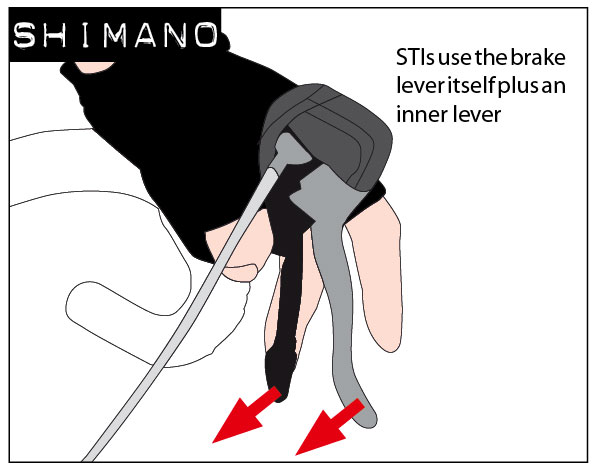
How does electrical shifting work?
Shimano Di2
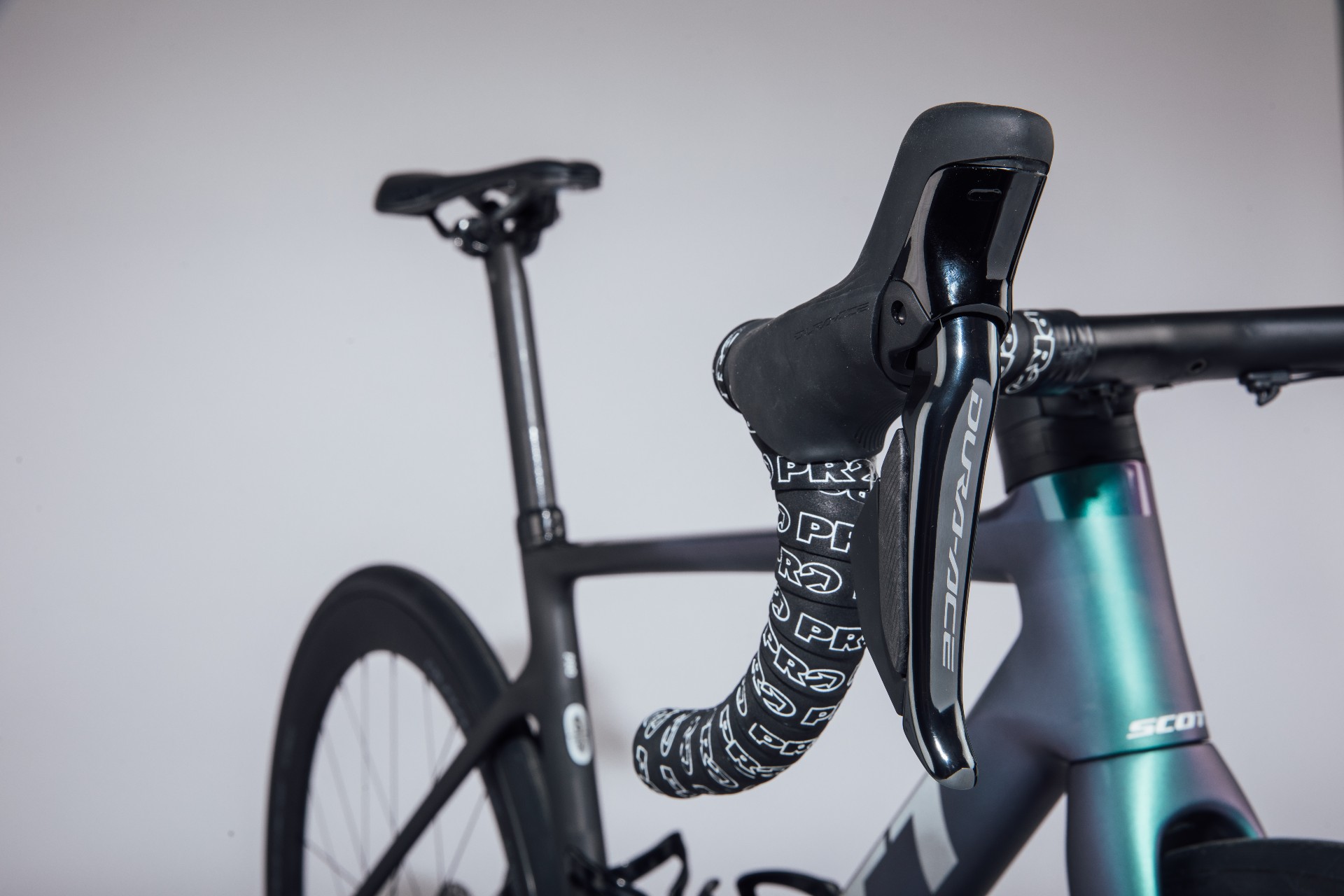
(Image credit: Future)
Shimano's electronic Di2 groupsets, both Dura-Ace and Ultegra, piece of work with a button system, but with the same principle equally the mechanical shifters. The left shifter operates the front derailleur, and the correct operates the rear.
At that place'south ii buttons behind the brake lever on each shifter. On the left the slimmer dimpled within button will shift the concatenation up from the small band to the big ring. The smooth paddle-shaped outer button below volition motility the chain down from the big ring to the small outer ring.
On the correct shifter, the inner dimpled push volition move the chain upwards the cassette to easier gears, while the smooth outer button will move the chain towards the harder gears if you lot're riding faster.
Campagnolo Super Record EPS
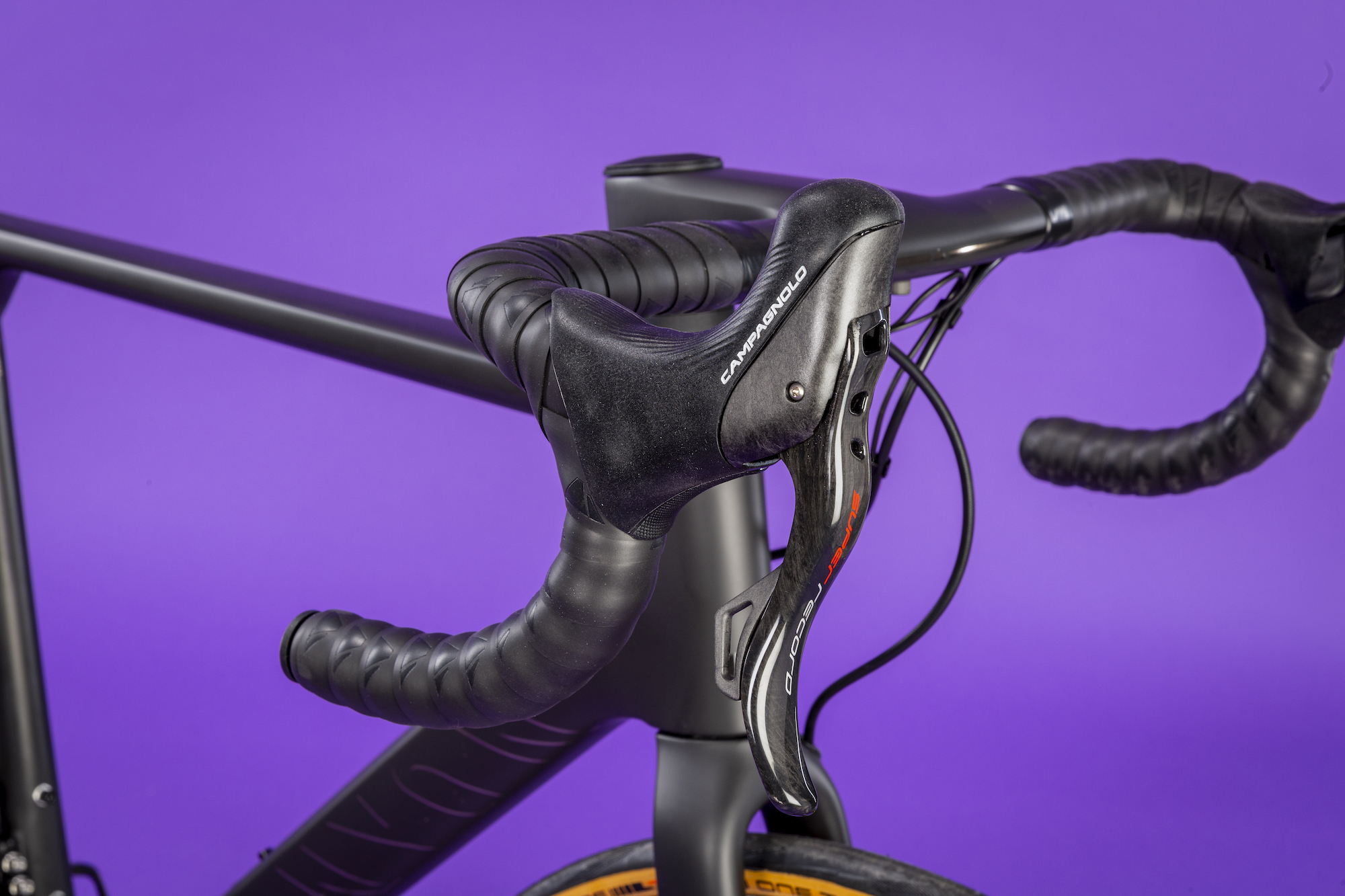
(Image credit: Future)
Like its mechanical cousin, Campagnolo Super Tape EPS shifters feature a button behind the brake lever and a thumb button within the shifter hood.
On the right-hand shifter the push button behind the restriction lever will motion the chain upwards the cassette into an easier gear. The thumb push button will exercise the reverse and move the chain into a harder gear at the rear. EPS also offers multi-shift, so if you concur the button down the concatenation will shift multiple gears until you release the button.
On the left-hand shifter, the paddle button behind the lever will motion the chain from the inner small band to the larger outer band. The left-mitt thumb push will do vice versa.
SRAM AXS
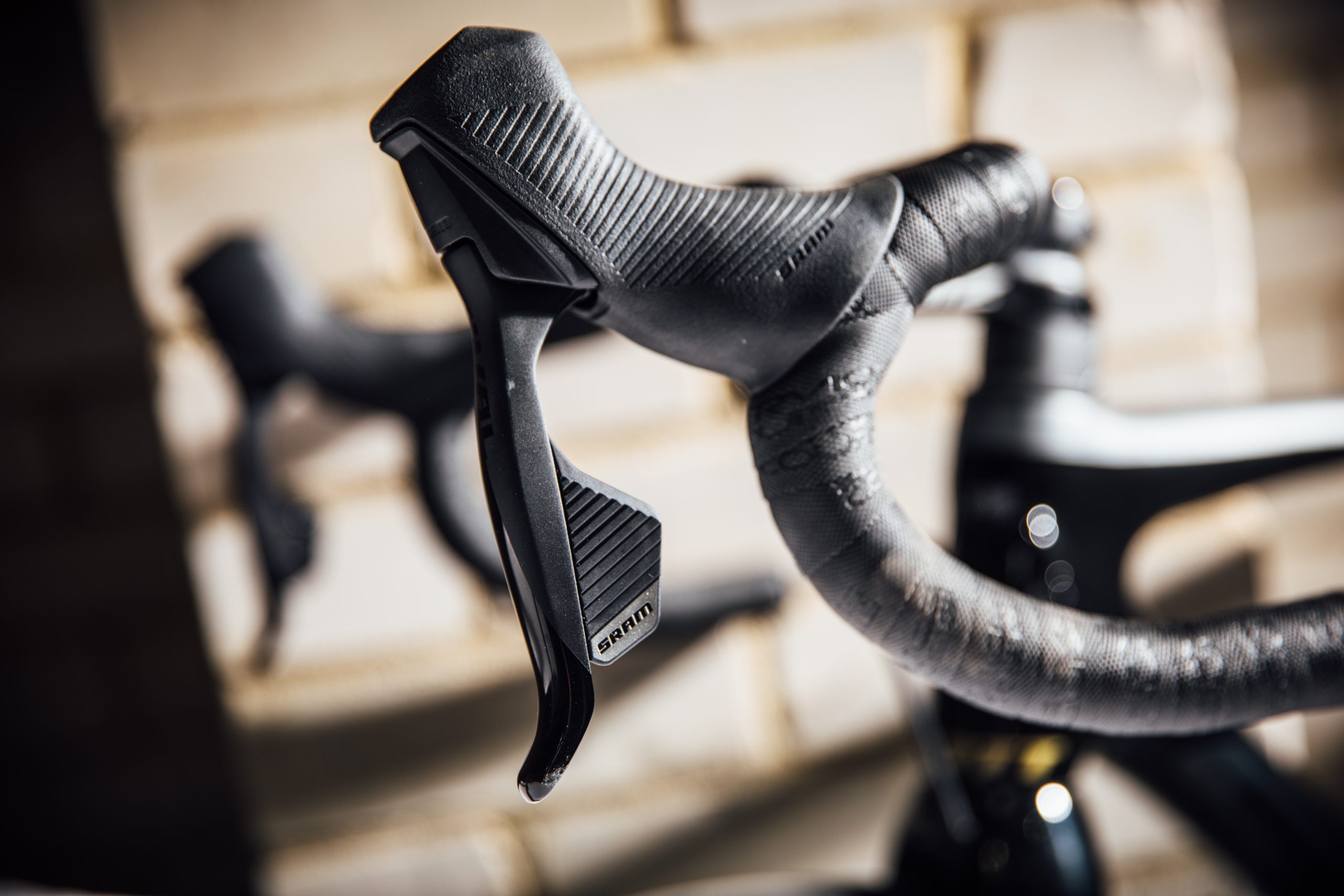
(Image credit: Future)
SRAM eTap AXS - the Reddish, Forcefulness, and Rival groupsets - works in a different way to the mechanical SRAM groupsets and the rival electronic groupsets.
As previously mentioned, SRAM AXS shifting setup is customisable only the default setting uses just two buttons. The right-hand paddle button, behind the brake lever, moves the concatenation into a harder gear on the cassette. The left-hand paddle button moves the concatenation up the cassette into an easier gear.
To move the concatenation betwixt the two front end chainrings, the passenger merely needs to push both the left-hand button and right-paw push at the same time and the chain will move up or downwardly depending on its starting position.
The linguistic communication of bike gears
Chainring: toothed band at the front end end of the drivetrain, attached to the creepo.
Cassette: cluster of sprockets at the rear of the drivetrain, containing upwards to 12 gears, of various sizes.
Block: another term for the group of rear sprockets, but really refers to the older, screw-on freewheel.
Derailleurs: front and rear derailleurs do all the difficult work of moving the chain from one sprocket (or chainring) to the next.
Sprocket: refers to an individual gear within the cassette/block.
Ratio: describes the relationship betwixt sprockets and chainrings, for case '53x12', or the sprockets on a cassette (11-28).
t: short for teeth — to draw how many a given sprocket has — for example '23t'.
Drivetrain: term grouping together all the moving parts that connect the crank to the rear wheel and hence drive a wheel forth — namely the chain, the cassette and the chainrings.
Cadency: pedalling speed, measured from how many revolutions the crank makes per minute — expressed in RPM.
STI lever: abridgement of 'Shimano Total Integration' — a term for Shimano's design combining brake and shift levers for road bikes, but often (mis)used generically to refer to the shift/brake levers regardless of brand.
Ergo lever: Campagnolo's proper name for its version of integrated gear shift and restriction levers (ie Campagnolo's STI).
DoubleTap lever: SRAM'southward piece of the pie, in terms of shifter engineering — uses the aforementioned lever for upshifts and downshifts.
Source: https://www.cyclingweekly.com/news/product-news/using-bikes-gears-efficiently-148101
Post a Comment for "How Do You Know What Gear You Are in"